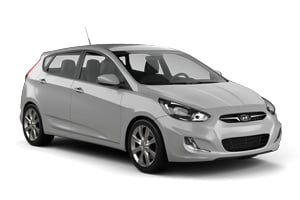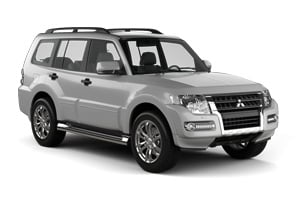- Over 1 million successful rentals
Car Hire Côte d'Ivoire
Save time and money. We compare the offers of car rental companies in Côte d'Ivoire on your behalf.
- Free cancellation Up to 48 hours prior to the scheduled pick up time
- Best price guarantee Have you found a better price? Let us know and we will make you a better offer.
- 24000+ pick-up locations Locations around the world
Compare Car Hire
Carrentals.co.uk offers simple and straightforward car hire comparison services. We don't add a penny to your quotes!
Car rental offers in Côte d'Ivoire
Whether you're looking for a small rental car or a station wagon for the entire family, we will always have a suitable vehicle for the lowest price. Below are some examples from our selection in Côte d'Ivoire.

-
Europcar From£ 38 /day

-
Avis From£ 83 /day

-
Avis From£ 108 /day

-
Avis From£ 108 /day

When to book a rental car in Côte d'Ivoire
Côte d'Ivoire - When is the most affordable time to rent a economy class car?
At this destination (Côte d'Ivoire), January is the most affordable time to rent a economy class car with an average daily rate of
Côte d'Ivoire - When is the most affordable time to rent an intermediate class car?
At this destination (Côte d'Ivoire), December is the most affordable time to rent a intermediate class car with an average daily rate of
Côte d'Ivoire - When is the most affordable time to rent a full-size car?
At this destination (Côte d'Ivoire), December is the most affordable time to rent a full-size class car with an average daily rate of
Côte d'Ivoire - When is the most affordable time to rent a SUV?
At this destination (Côte d'Ivoire), December is the most affordable time to rent an SUV with an average daily rate of
Car rental locations in Côte d'Ivoire
Carrentals.co.uk compares rental car prices at the following destinations

Côte d'Ivoire Guide
Côte d'Ivoire is best explored by rental car. Carrentals.co.uk has over 1 pick-up locations in Côte d'Ivoire. This means there is always a pick-up location close to your destination.
Most popular car hire locations in Côte d'Ivoire
Driving
Côte d’Ivoire (Ivory Coast) has always been at the centre of West Africa's rich trading routes, having become most prosperous when the French established themselves here. The country is known for its stunning natural landscape which is replete with rich African flora and fauna. By car, visitors can head to Comoe National Park and Abokouamekro Game Reserve to experience Africa's wildlife, but travel to some parts of the country is presently advised against.
Driving Tips for Côte d’Ivoire
While the road network covers around 42,250 miles, is quite good and extensive by West African standards, driving here can be problematic for a number of reasons. Local drivers tend to ignore speed limits, signals and lane demarcations. Driving is unsafe at night as roads are poorly lit, with pedestrians and bicycles paying little heed to traffic. Many vehicles are poorly maintained and lack functioning lights.
Driving licences: a UK driving licence or any valid foreign driving licence can be used, but it must be accompanied by confirmation of validity, issued by the embassy of the driver's country of origin.
Which side does Côte d’Ivoire drive on: the right.
Speed limits:
Rural areas: 50mph (80kph) to 75mph (120kph)
Built-up areas: 34mph (55kph)
Alcohol limits: as in the UK, 0.08 per cent.
Driving age: 18 years.
Seatbelts: mandatory for all passengers.
Mobile phones and GPS: there are no laws banning the use of mobile phones while driving, but this practice is advised against. GPS maps are available for use in the country.
Cost of fuel in Côte d’Ivoire: more affordable than in the UK.
Car hire and fuel payment: petrol stations only accept cash payments. Major credit cards can be used for car hire.
Insurance: is obligatory and should be included with car hire.
Traffic and parking: as security is an issue in the country, visitors are advised to park only in safe and secure areas. Drivers are advised to make sure doors are locked, even while driving. Traffic can be chaotic in the large cities.
Transport
Trains
There is a north to south railway line travelling from the port city of Abidjan, the de facto capital of the country, passing through Bouake in the central region and the large town of Ferkessédougou in the north. It continues to Ouangolodougou, which is further north and close to the border with Burkina Faso, and on to Ougadougou, the capital of Burkina Faso. While the ride can prove to be an adventure, schedules and fares are inconsistent and more importantly, the train passes through unsafe regions dominated by rebels. Travellers must keep abreast of safety and security issues if attempting to travel by train.
Taxis
Orange or red-orange taxis are available in the main cities. These taxis ply routes within cities and are different from the other coloured cabs that ply routes within certain neighbourhoods. They are inexpensive and easy to find. Some have some form of meter but almost always it is necessary to agree on a price before travel. In Abidjan, a cab ride from the airport to the city costs around £6. However, depending on how well you haggle, this rate can be brought down to £3. Taking a cab at night is highly inadvisable.
Buses
There are cheap and generally reliable buses in some of the main cities, but they can be extremely crowded at times, with some bus stations overwhelmingly busy. Unless you are used to travelling in West African countries, they are best avoided. Visitors using buses must remain vigilant for pickpockets. In Abidjan, there are shared cabs which perform the function of buses.
Ferries
There are no regular ferries providing inter-city services connecting the main ports on the country's southern coastline. There are two main ports in the country: Abidjan Port, the largest container port in West Africa with facilities for fishing vessels, and San Pedro Port, a deepwater port in the southwest. However, visitors in Abidjan can cross the lagoon by ferry to take in the city's skyline.
Airports
The main international airport in Côte d’Ivoire is Felix Houphouet-Boigny International Airport, also known as Port Bouet Airport. It services the city of Abidjan. Two airlines connect Europe to Abidjan: Air France, which flies from Paris-Charles de Gaulle, and Brussels Airlines, which flies from Brussels. National carrier Air Ivoire ceased operations in 2011 so no domestic air services are presently available.
Explore
Exploring Côte d’Ivoire
Tourists visiting Côte d’Ivoire will begin their travel in Abidjan. It served as the capital during the rule of former president-for-life Felix Houphouet-Boigny when the city was at its most prosperous. While Abidjan is no longer the capital, it is still the country's largest and most significant city, with lots of restaurants, hotels and museums.
There are a number of Atlantic beach resorts in the south of the country, many of which are still in the development stage. Close to Abidjan are the coastal towns of Assouinde and Tiagba. Then, there is Grand-Bassam, a coastal town which has retained some of its French colonial charm, having been the capital of the French colony until 1896.
The centrally located de jure capital city of Yamoussoukro is also worth a visit for its lively markets and the grand Basilica of Our Lady of Peace, the largest Christian church on the entire planet.
Exploring the countryside is a popular tourist activity. Visitors can arrange guided tours within Comoe National Park (northeast) where the main attractions are lions, hippos and waterbuck. Abokouamekro Game Reserve (near Yamoussoukro) is another popular wildlife spotting destination.
Weather
The coastal areas of the country experience an equatorial climate, with things becoming tropical to semi-arid as you move north to the inland regions. The dry season is from November to May, while the wet season is from June to October. The tail end of the dry season is when temperatures are usually at their highest, in some cases up to 40°C. In general, temperatures average from 25 to 32°C. In northern areas, the climate is much more extreme. The early part of the dry season is probably the best time to visit.
Practical information
-
CurrencyWest African CFA franc
-
Driving directionRight
-
City speed limit60 km/h
-
Freeway speed limit110 km/h
-
LanguageFrench
What most people want to know
The following questions and answers are a selection of the most popular questions. If you do not find the answer to your question, have a look at the Frequently Asked Questions page or contact us.
- Avis
- Budget
- Europcar
- Keddy By Europcar
- Green Motion